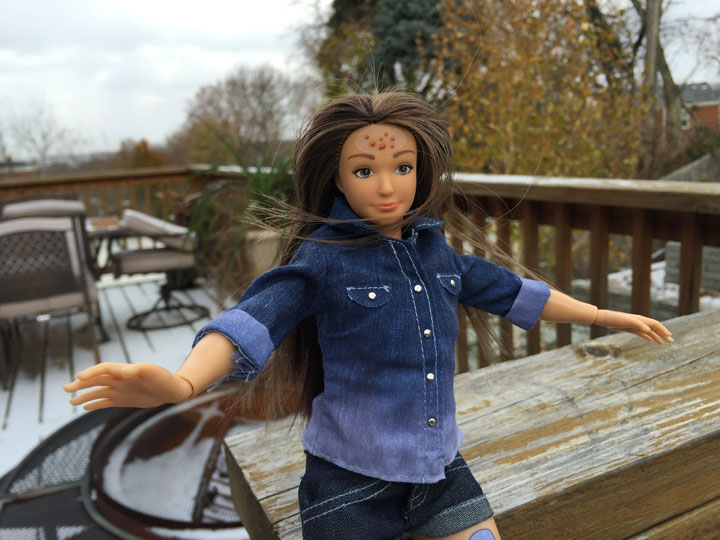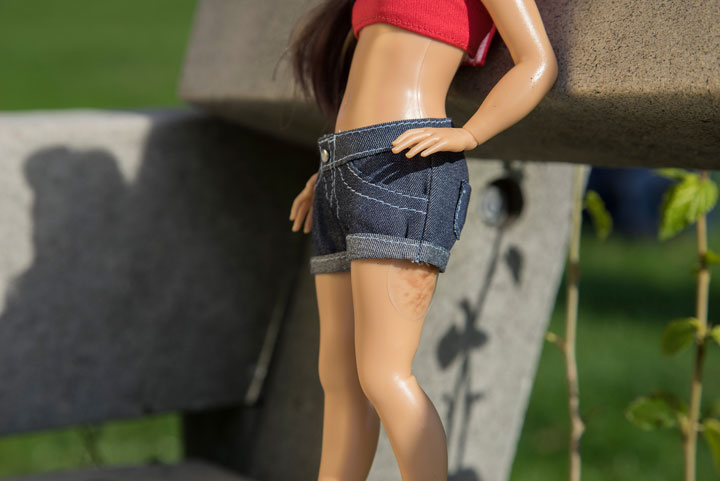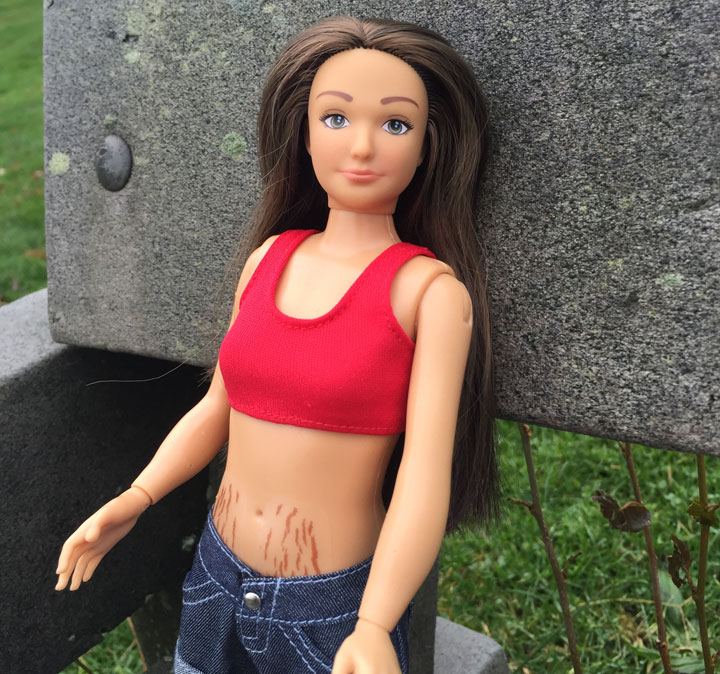TORONTO – If you thought a re-imagined Barbie doll with measurements of an average 19-year-old girl was a step forward for female body image, just wait until you see creator Nickolay Lamm’s next step: stickers for acne, stretch marks and cellulite. The 26-year-old’s design for Lammily–a doll whose feet aren’t permanently arched to look like she’s wearing invisible heels–went viral in March. The crowdfunding campaign raised $95,000 in the first day, said Lamm.

The latest update came on Wednesday, when fashion clothing and “Lammily marks” went on sale. These marks include stickers for acne, stretch marks, scars, tattoos, freckles, casts for a broken arm and cellulite. Lamm said there might be people who think it’s a joke, but he wants to send a serious message.
“I was chatting with my friend – he’s really smart – he said, ‘You should make this doll acne stickers’ …then Demi Lovato tweeted she wanted dolls to have cellulite,” said Lamm, who shared and expanded the ideas with his family.
“I’m trying to show – if you look at the photo of the doll being happy with acne– it’s nothing to be depressed about.
“Cellulite, acne, boo boos, that’s just a natural part of life; it’s not something to run away from. It’s just natural and who we really are. And who we really are is, I guess, really beautiful.”
Lamm said within the first month of March’s campaign, just over 21,000 dolls had been pre-ordered. As of Wednesday, he had $560,000 in pre-order sales, and estimated two to five dolls are purchased every minute.
Ryerson University associate professor Michelle Dionne, who researches body image in the department of psychology, thinks the doll will be a bigger hit with adults since kids may not get the “sophisticated messaging around unrealistic standards of beauty.” But she points out one thing kids are likely to embrace about the new marks.
“They have always liked messing up their toys,” wrote Dionne in an email to Global News.
“Who didn’t have a sibling growing up who used a marker or a pair of scissors to help liberate Barbie from those crushing cultural standards of attractiveness?”
The “average” looking doll is becoming popular in the wake of a broader push for normalized female bodies on social media. Two weeks ago, Victoria’s Secret changed the wording of a slogan in the wake of an online petition of over 30,000 signatures in the U.K.
The ads spurred other underwear companies, such as Dear Kate, to come up with their own version–in similar fashion to Lamm’s reimagined Barbie doll.
An update on the petition page took credit for the change from “The Perfect Body” to “A Body for Every Body,” acknowledging they received no apology or statement.
“This is still an incredible achievement!” wrote organizer Frances Black. “Let’s hope advertisers get the message that body-shaming is never ok!”
There was also social media backlash–and complaints from anorexia charities–against clothing company Topshop at the end of October, after a photo of a mannequin’s extremely skinny legs next to a normal woman’s legs went viral with over 10,000 retweets.
Dionne said social networks are responsible for reaching people who otherwise may not consider issues like body image very deeply in the past.
“Societal change takes a long time—but modern social networks are in a position to accelerate that,” she said, noting it’s particularly likely if something “goes viral.”
There’s also opportunity to lobby companies to use appropriate imaging and messaging in advertising, Dionne said, pointing to an example of a book published years ago that spurred new controversy after a recent blog post.
“Mattel was forced to apologize yesterday for the ‘Barbie: I can be a computer engineer book’ that was ironically incredibly sexist and misguided,” wrote Dionne. “She couldn’t code very well but her hair looked fabulous when the boys had to step in and help her.”
Dionne said the blog post, various media sites, and retweets and “likes” from the public created a movement that Mattel couldn’t ignore–and wasn’t likely to have happened without social media.
But Lamm is careful not to paint Barbie (or creator Mattel) as the bad guy when it comes to his Lammily doll.
“In the toy world, Lammily could be the girl next door and Barbie could be the really cool girl who does a lot of things who lives a very cool lifestyle. And there’s nothing wrong with that, it’s just the way she is. There’s also nothing wrong with Lammily. She just lives life like we do.”





Comments